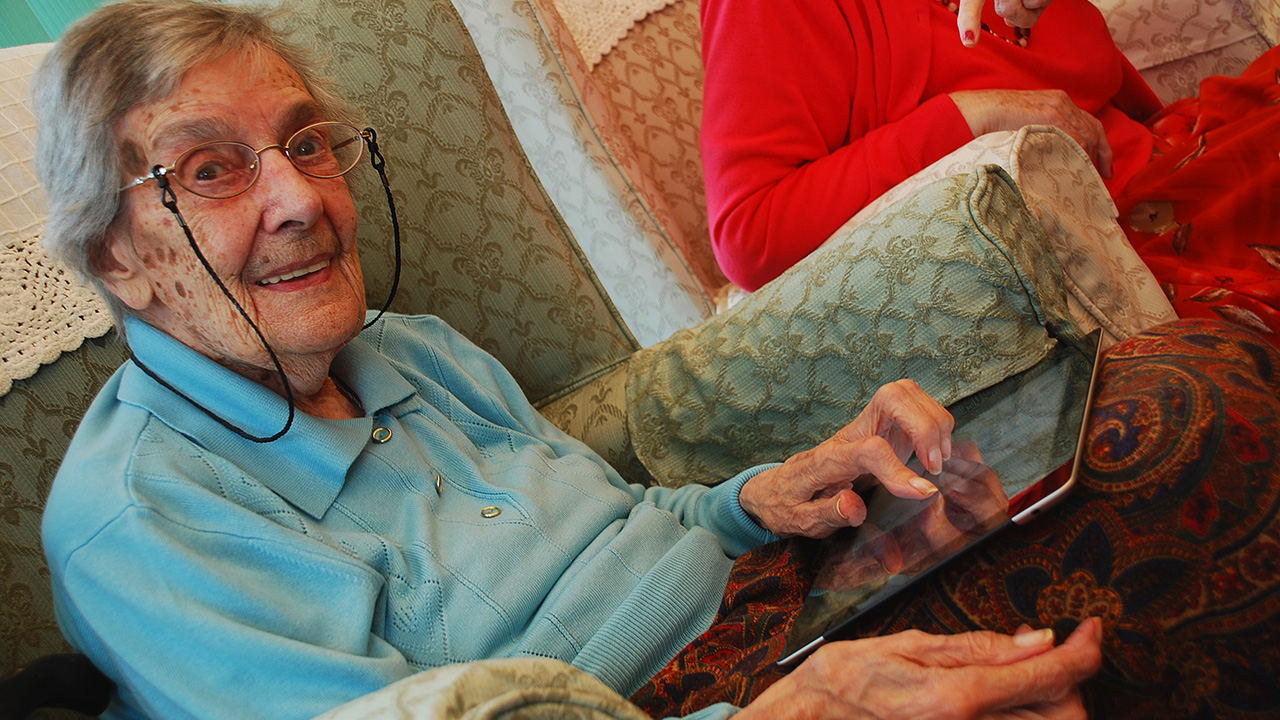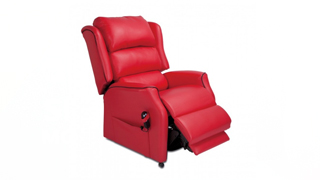Guide to elderly housing options
Where your parent lives is important for their health and wellbeing. Many, indeed most, older people aim to stay in their own homes for as long as possible and may need help with repairs and adaptations and access to practical help in the home
Some look to move in later life. If you are considering how your home suits your needs then advice on housing options and practical help services are available.
1. Staying in your own home might mean repairs and adaptations
Repairs
If a property needs repairs to make it a safe and comfortable place to live and your parent is a home owner, a home improvement agency (HIA) should be able to offer help with organising these
They should be able to offer information about paying for the work, technical advice, help with finding and dealing with a builder plus offer associated information to enable you to stay put
Many employ a handyperson who can undertake smaller repair jobs at low cost
To find your nearest HIA go to the website of the National Co-ordinating Body for HIAs, Foundations at www.foundations.uk.com
The rights of tenants and leaseholders with regard to repairs is clearly explained on the Shelter website
Adaptations
How you get help with larger home adaptations, e.g. a stair lift or, shower, and your legal rights to help depend upon your tenure (owner occupier, leaseholder, social tenant, private tenant)
The process of obtaining any help due will vary according to where you live
The main source of financial help for larger adaptations is a Disabled Facilities Grant (DFG)
This is a means-tested grant to which people have a legally defined entitlement and which pays for all or part of the cost of adaptations
It is administered by the local housing authority, usually the environmental health department, but the social services occupational therapy department is usually involved as they advise on what adaptations the disabled person needs (technically defining ‘what is necessary and appropriate’)
Home owners, private tenants and housing association tenants have a legal right to apply for a DFG, but not local authority tenants. In the case of the latter, the council is obliged as the landlord to undertake the adaptation and in practice many housing associations also pay for or contribute to adaptations for their tenants
Local knowledge is key to advising on adaptations as local practice varies significantly
The local home improvement agency should also be able to help
Is your parent’s home suitable if you have a long term condition?
Care & Repair England has produced a series of guides for people with long term conditions
These look at the suitability of existing housing advising on repairs, adaptations as well as moving options
They also look at issues such as heating and lighting, safety and security, going out and about, gadgets and equipment and include other useful sources of advice for that health condition
There are guides covering heart, respiratory and macular disease, dementia, stroke and arthritis.
2. Other housing options
Only a small proportion of older people, i.e. people over retirement age, live in specially built, age specific housing
The majority (90%) live in ‘ordinary’ housing that anyone might live in
Just over 5% live in sheltered/retirement housing and just under 5% live in residential care or other
Sheltered housing and extra care
Sheltered housing is popular, because it still provides the older person with some independence, yet with a little more support
Sheltered housing means your own flat or bungalow in a block, or on a small estate, where all the other residents are older people (usually over 55). With a few exceptions, all developments provide independent, self-contained homes with their own front doors
Schemes will also usually have some shared or communal facilities such as a lounge for residents to meet, a laundry, a guest flat and a garden
One of the most attractive features of sheltered housing is that the homes generally have a 24-hour emergency alarm and often a warden, who lives either on-site or close by
Properties in most schemes are designed to make life a little easier for older people – with features like raised electric sockets, lowered worktops, walk-in showers, and so on. Some will usually be designed to accommodate wheelchair users. And they are usually linked to an emergency alarm service to call help if needed
The warden is in charge of the overall site and responds to any emergency alarms. They also get to know the residents and inform them about the local services and support available. They do not actually provide any care themselves
There are many different types of scheme, to rent, or to buy. They usually contain between 15 and 40 properties, and range in size from studio flats through to 2 and 3 bedrooms
Because most sheltered housing is either provided by housing associations or by the councils themselves, the best source of information for someone who is interested in finding out more is to contact the housing department, their local council or First Stop
There are a number of property companies that are building private sheltered housing to buy or rent, this can be explored on a local basis, or by contacting First Stop There are also some mixed tenure schemes – with properties to rent or to buy
New forms of sheltered housing have been pioneered in recent years, to cater for older people who are becoming more frail and less able to do everything for themselves. These are generally known as extra care and in one or two cases as very sheltered schemes
Most properties in these schemes will suit less mobile people and wheelchair users, and bathrooms particularly will be designed to make it easier for assistance to be offered. Schemes may have their own care staff, and will usually provide one or more meals each day, if required
Extra care has grown over the years with schemes mainly developed by housing associations and property companies. Contact First Stop for details of schemes in
your area
People wanting to move into sheltered housing for rent will need to go through an application process in council schemes, which may assess their financial situation and what their mobility needs might be
Often there is a waiting list for sheltered housing and most councils allocate their sheltered housing based on greatest need. But the housing department or housing association will be able to give people an indication of how long this list is and what the process is that someone needs to go through in order to apply for a place. Housing associations will have their own criteria and some operate an open waiting list. For sheltered housing for sale contact the company directly
Retirement villages
An increasingly popular concept, but unfortunately lacking any single, clear definition. Essentially a retirement village is anything from an estate of over 100 units to a full blown village-sized development of bungalows, flats or houses, intended for occupation by older people often with specialised facilities
Evidence shows very clearly that older people see retirement villages as a positive choice. They are particularly attracted by the combination of independence and security, as well as opportunities for social engagement and a very active life
The size of retirement villages allows economies of scale and the development of facilities and care services that would not be viable in smaller developments
Mixed-tenure developments may be one way of extending the accessibility of schemes to older people with a wide range of levels and types of income
Affordability may be an issue for those who are self-funding their own care. Offering older home-owners opportunities to rent their homes in the village may allow some to release their housing equity to assist with paying for care services
Flexible on-site care services can assist residents as their care needs change, and may promote early hospital discharge and reduce the need for hospital admission
Retirement villages, extra care and sheltered housing can help address the current shortage of homes suitable for later life, by developing housing that is purposefully designed to meet the current and future housing needs of older people, as well as releasing significant numbers of under-occupied properties for use by the wider community
Almshouses
Almshouses are run by small, independent charitable trusts, many of them established hundreds of years ago and with many of the buildings now listed for their architectural merit
Each charity has its own rules determining which older people it can house and is run by a board of Trustees
The Almshouse Association manages a list of local Almshouses
Abbeyfields
Abbeyfield offer older people supported living arrangements that are similar to extra care housing
They also run care homes, some of which offer nursing care or specialist facilities for people with dementia
A key element of Abbeyfield is to address loneliness and so all Abbeyfield houses have a live in house manager and shared main meals. You can check if there is there an Abbeyfield House in your area here
4. Getting advice on housing options
FirstStop Advice is an independent, free service providing advice and information for older people, their families and carers about housing and care options in later life
They also offer useful information for carers looking for support and advice. The service is provided by Elderly Accommodation Counsel (EAC) in partnership with other national and local organisations, and brings together a wealth of expertise through one telephone number and one website to help you explore the choices open to you and access the housing, support and care services you need
Other sources of advice on housing and care options are:
Care & Repair England has produced a series of guides for people with long term conditions. There are guides covering heart, respiratory and macular disease, dementia, stroke and arthritis
Care and Repair England. The Renewal Trust Business Centre, 3 Hawksworth Street, Nottingham NG3 2EG Tel/Fax: 0115 9506500
myageingparent.com has teamed up with Design for Independence Ltd, a private specialist housing occupational therapy company, to help your elderly relatives adapt their home to maintain their independence
Get help now by calling 01799 588056 and quoting ‘myageingparent’
Or fill in the form for more information
Please note that Design for Independence do not provide rehab sessions or services.
Please note that Design for Independence are unable to provide information regarding local authority provision and eligibility criteria for public funds; please contact your local authority directly for this information.
Disclaimer: All services are provided by Design for Independence and myageingparent.com has no responsibility or liability for the products or services provided by Design for Independence. All requests and complaints should be addressed directly to Design for Independence. myageingparent.com bears no responsibility for goods and services purchased via third parties featured on this website.











